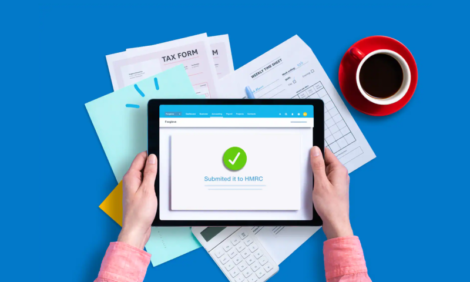
Three things you might not know about Making Tax Digital for VAT

If you’re a VAT-registered small business owner, you may have heard the soft thwump of a letter landing on your doormat this past week, emblazoned with four familiar letters: HMRC. That’s right, it’s time for a gentle nudge/firm reminder that your business must now comply with government legislation Making Tax Digital (MTD) for VAT.
Part of a wider government initiative to simplify the tax system and make it easier for taxpayers to get it right, MTD for VAT requires affected individuals and businesses to use MTD-compatible software to keep digital records and submit their tax return.
While all VAT-registered businesses have had to comply with MTD for VAT from April 2022, it’s no surprise that implementing a change of this size has proved challenging for some businesses, already facing a long list of to-dos.
Here, we break down some of the things you may not know about MTD for VAT, from software requirements, to benefits, to why it really is time to dive into tax digitisation.
You need specific software to comply with MTD for VAT
MTD rules require that you keep and maintain your records digitally, and send your returns to HMRC via MTD-compatible software.
Under the new MTD rules, you won’t be able to submit your VAT return via the HMRC website. Instead, you’ll need compatible software with an MTD for VAT feature to submit your return from the platform.
Thankfully, the records you need to keep for your VAT return have not changed. The only difference is where and how these are stored.
So, for every item, you’ll still need to record:
- Time of supply
- Value of supply
- Tax rate
Brexit has impacted MTD
This may change in the future, but as of this date MTD has been affected by changes to import, with Brexit impacting how you should record imports and exports from EU countries. If your small business imports goods into Great Britain from an EU country, they’ll be subject to import VAT the same as non-EU countries.
Now that Great Britain (England, Scotland, and Wales) is no longer part of the EU VAT area, imports from the EU are subject to import tax. However, the rules are different for Northern Ireland. If you think this may affect you, this resource should have all the information you need.
MTD for VAT can save you time and make you more efficient
Yes, MTD for VAT requires change for your small business, but this can be a positive change. In fact, research from HMRC on MTD for VAT shows existing participants feel more confident about filing their returns since the rules were introduced. And there are more benefits, too, including fewer reporting errors, less time spent on paperwork, reliable record-keeping and faster returns filing.
MTD can not only help you save time, but improve accuracy. By automating manual processes through software, you can ensure transactions are imported correctly, and errors are automatically identified. In doing so, you can spend less time on paperwork and more time driving the success of your business.
Digitising taxes may not sound like the most exciting of undertakings for your business, but it can drive real benefits both now and in the future – so why put off compliance any longer? If you want to learn more about MTD for VAT, check out some of our other resources for small businesses.
The post Three things you might not know about Making Tax Digital for VAT appeared first on Xero Blog.
Source: Xero Blog






